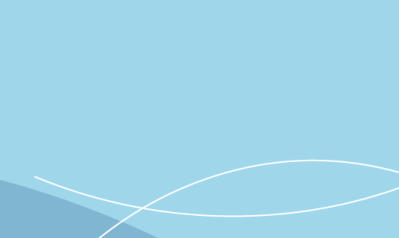




Ear Health-Check and Irrigation
An electronic ear irrigator is used; it involves a pressurised flow of warm water that
removes the build-up of ear wax. The irrigator has variable pressure control so that
irrigation can be performed at the minimum pressure. A controlled flow of warm water will
be squirted into your ear canal to flush out the ear wax and any other particles. Ear
irrigation is a painless procedure.
Ear Irrigation – What You Need To Know
Ear wax is a normal body secretion, providing protection against infection and dust
particles.
The ear is self-cleaning, and wax works its way out naturally.
Never use cotton wool buds to clean inside your ears, they irritate the delicate skin inside
the ear canal, also pushes wax back into the ear compacting it.
Our Ear Health-Check and Irrigation Practitioners

Patient-centred healthcare to improve your quality of life
93 Lynn Rd,
Downham Market,
PE38 9QE
Visit Us
Contact Us
Prior to having your ear irrigation you need to complete the following for a minimum of 7 nights prior to your appointment:
To minimise risk of injury, the wax must be softened with ear drops for at least 7 days. Olive oil drops are well tolerated in most people. The drops should be used
twice a day
•
Lie down with affected ear uppermost.
•
Using a dropper/pipette, instill 2-3 drops (up to 5 ml) of pharmacy grade olive oil (not from kitchen) at room temperature into the ear canal.
•
Remain lying down for 5-10 minutes. It’s ideal to instill olive oil on affected ear at night then lay/sleep on unaffected ear. If putting olive oil in both ears, you may
find it easier to do alternate ears on alternate nights.
•
Repeat this procedure daily for at least 7 nights prior to ear irrigation appointment.
The procedure:
We will go through your case history regarding your ear health.
A thorough ear examination will then be carried out, which involves looking into your ear canal with an otoscope.
You will then be asked to sit holding a paper cup under your ear to catch the water as it runs out of your ear carrying the particles and wax with it. We will then dry
your ear and check it again for completeness.
Ear Irrigation is not risk free
Irrigation is not recommended within 2 weeks of flying
Partial blockage of the ear only requires irrigation if you wear a hearing aid and/or need a special examination.
Ear Irrigation can cause damage to the ear
If you ever had surgery to your ears or had a perforated ear drum, you must tell us before the procedure. If you are very prone to ear infections then again, you must
tell us.


Clare is a structural osteopath,
and has experience in
craniosacral osteopathy, visceral
osteopathy, functional and
harmonic techniques to suit the
individual patient needs.



Clare Finch

Clare is a structural osteopath,
and has experience in
craniosacral osteopathy, visceral
osteopathy, functional and
harmonic techniques to suit the
individual patient needs.



Clare Finch

Our Multidisciplinary Team are Here to Offer You the Most Efficient and Effective
Diagnosis and Treatment Plan Suited to Your Needs and Optimal Wellbeing




An electronic ear irrigator is used; it involves a
pressurised flow of warm water that removes the
build-up of ear wax. The irrigator has variable pressure
control so that irrigation can be performed at the
minimum pressure. A controlled flow of warm water
will be squirted into your ear canal to flush out the ear
wax and any other particles. Ear irrigation is a painless
procedure.
Ear Irrigation – What You Need To Know
Ear wax is a normal body secretion, providing
protection against infection and dust particles.
The ear is self-cleaning, and wax works its way out
naturally.
Never use cotton wool buds to clean inside your ears,
they irritate the delicate skin inside the ear canal, also
pushes wax back into the ear compacting it.
Our Ear Health-Check
and Irrigation
Practitioners


Ear Health-Check
and Irrigation
Prior to having your ear irrigation you need to
complete the following for a minimum of 7 nights
prior to your appointment:
To minimise risk of injury, the wax must be softened
with ear drops for at least 7 days. Olive oil drops are
well tolerated in most people. The drops should be
used twice a day
•
Lie down with affected ear uppermost.
•
Using a dropper/pipette, instill 2-3 drops (up to 5
ml) of pharmacy grade olive oil (not from kitchen)
at room temperature into the ear canal.
•
Remain lying down for 5-10 minutes. It’s ideal to
instill olive oil on affected ear at night then
lay/sleep on unaffected ear. If putting olive oil in
both ears, you may find it easier to do alternate
ears on alternate nights.
•
Repeat this procedure daily for at least 7 nights
prior to ear irrigation appointment.
The procedure:
We will go through your case history regarding your
ear health.
A thorough ear examination will then be carried out,
which involves looking into your ear canal with an
otoscope.
You will then be asked to sit holding a paper cup under
your ear to catch the water as it runs out of your ear
carrying the particles and wax with it. We will then dry
your ear and check it again for completeness.
Ear Irrigation is not risk free
Irrigation is not recommended within 2 weeks of flying
Partial blockage of the ear only requires irrigation if you
wear a hearing aid and/or need a special examination.
Ear Irrigation can cause damage to the ear
If you ever had surgery to your ears or had a perforated
ear drum, you must tell us before the procedure. If you
are very prone to ear infections then again, you must
tell us.
Patient-centred healthcare to improve your quality of life
93 Lynn Rd, Downham Market, PE38 9QE
Visit Us
Contact Us
Clare is a structural osteopath,
and has experience in
craniosacral osteopathy, visceral
osteopathy, functional and
harmonic techniques to suit the
individual patient needs.


Clare Finch
























